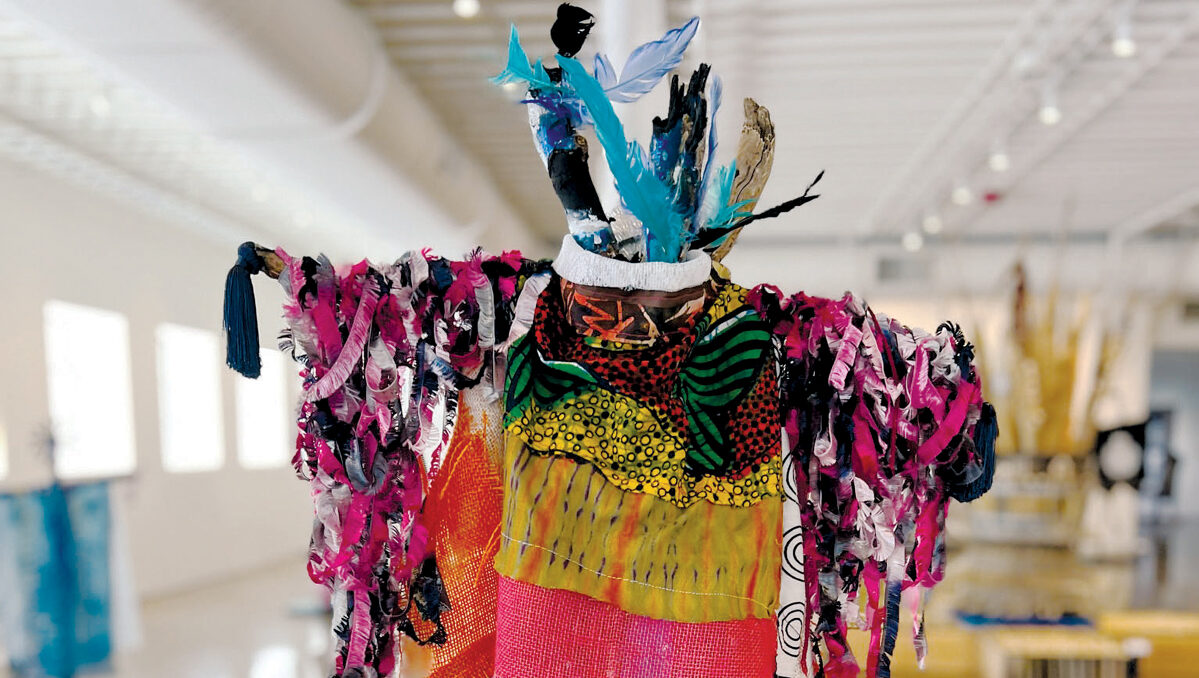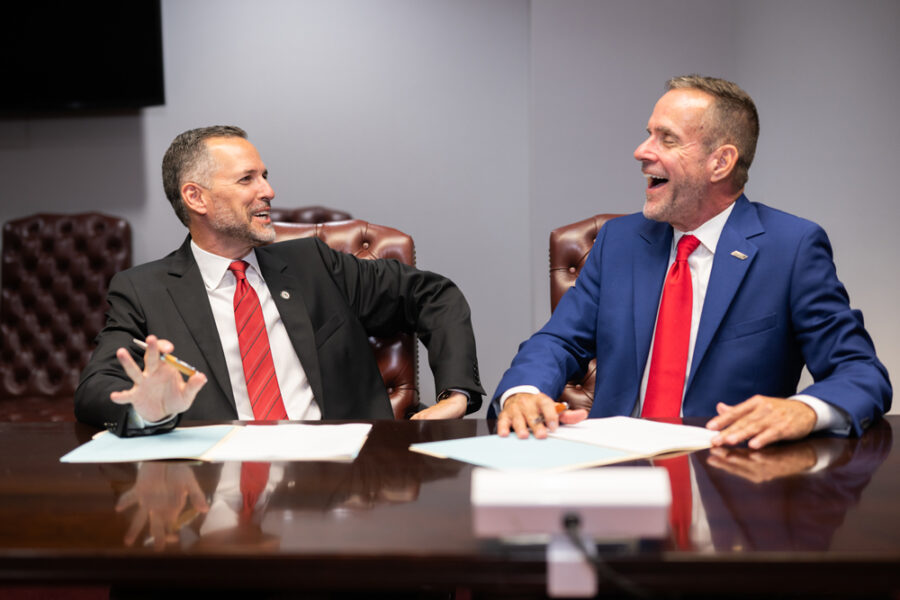This summer, in the center of the main gallery of the Center for Social Justice & Civil Liberties in Riverside, California, there stood a giant assembled artwork: a bouquet of wood with sticks, diverse colored beads, ropes, and dowels of different sizes sticking out in all directions, all topped off by a barrel that represented the hull of a ship, filled with a few dozen dried, carefully decorated palm fronds. An intricate assemblage full of story and suffering.
That’s because each detail in the sculpture, which was made by Deborah McDuff Williams ʼ02 (Los Angeles, BA), represents the many historical communities of enslaved people and their colonizers and traffickers. Country names burned into the side panels are joined by estimates of how many people were enslaved there. Wooden beads glued on top represent those who jumped ships to die in the ocean, those who died incarcerated, and those who experienced life enslaved. As Williams explains, “Each bead represents the tens of thousands, but it gives you a feeling of the multitude.”
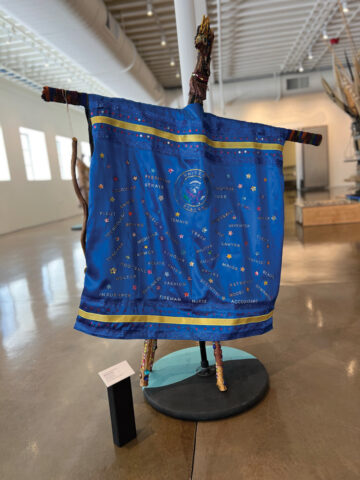
Williams considers herself a visual journalist whose goal is to awaken one’s awareness to another person’s plight in life. With this piece and the more than a dozen other artworks in her show “Roots by the River”—mostly abstract sculptures of adult- and child-sized figures arrayed around the central bouquet—Williams explores the institution of slavery and the lingering effects of systemic racism on our nation and world.
She intertwines these narratives with her knowledge of African cosmologies and her powerful experience visiting the First African Baptist Church in Savannah, Georgia, which she refers to in her artistic mission statement as “The Black Church.” This church is one of the oldest surviving Black houses of worship in the U.S., and as Williams explains, “The Black Church wooden pews have existed for hundreds of years, long after they were carved by enslaved Africans.” With her own sculptures, Williams takes inspiration from the way that the carvings and artwork in the church were encoded with messages for these enslaved people to communicate their plans for escape and the routes they would follow.
“Roots by the River” is a moving and impactful show. Each art piece is crafted from found and repurposed materials including burlap, pearls, feathers, beads, shells, and even sand. When you account for time Williams spent gathering materials, this exhibition took five years to complete. “I let the pieces tell me what to do,” she explains. “Each piece has its own story. I’m telling a story with materials and poetry. I don’t think it would mean as much if it was painted. This is more impactful.”

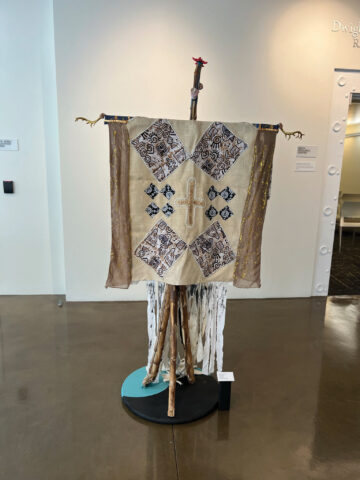
For these sculptures, Williams aims to “make viewers aware of those who have been stolen for labor, servitude, indoctrination, and/or sex.” But in tandem with this, she also draws focus to the beautiful pieces of culture that have withstood the horror of slavery—the ancestral roots that have been saved, carried forward, and made to hold new life. “I call these the magical wands,” she explains. “When you think of all the different roots and different people, I think of the beauty of that community.”
Each sculpture of a figure has a wood base and uses branches, twigs, and twine to form an armature. In some, spikes emerge from the wood. “Smaller ones are people whose lives were cut short,” she explains. “But the longer ones are those who had a longer life, who made it to the top. But it’s limited, those at the top are limited, there’s not very many.”
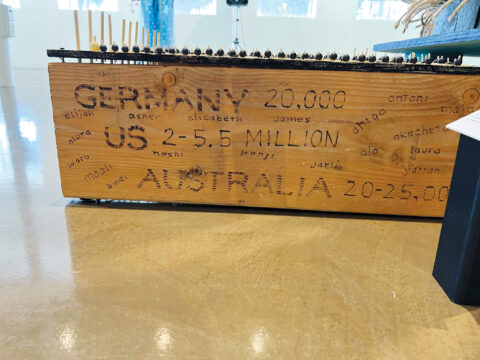
For Williams, the act of creating these sculptures sometimes connected her with the experience of her own ancestors with unexpected force. For instance, when she was pyrographically etching words and numbers onto boards. “When I was burning this wood and the wood was sizzling and there was smoke,” she explains, “I thought about people being branded and what that felt like.”
But making this artwork also gave her the chance to explore and make tangible the routes of resistance followed by enslaved people. One of her pieces, Roots By The River, is entirely made of branches and twine, spotlighting the various routes used for the enslaved to escape, passages that led escapees through locales as varied as Connecticut, Yellowstone, Lake Michigan, and Sacramento.
Many of the sculptures in “Roots by the River” have an armature of sticks and branches in the rough shape of a human. Each figure represents and tells a story about the place in American history held by the descendants of enslaved and trafficked Africans. There are those that represent specific decades, while others focus on consumerism and the generational trauma embedded in the culture. One figure represents “The Help” and another, “The Priest.” There are sculptures that stand for incarcerated people, for performers, and even for those poisoned by the food products given to poor black people who cannot afford healthier options.. Yet another stands in for those who had once been enslaved but later won their freedom and decided to devote their lives to helping others find the route of freedom.
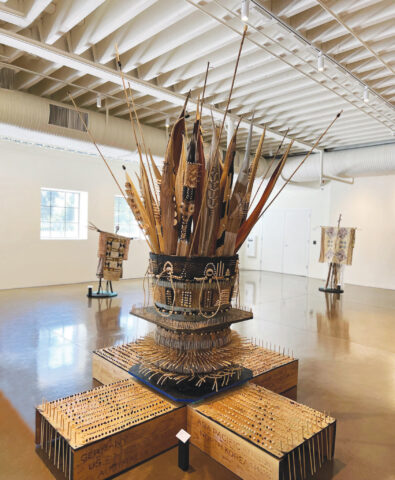
For Williams, there is a pleasure in finding the beauty in things that are old and broken. A Queen Anne chair is repurposed with the history of African Americans, referencing the enslaved, but also the wicked hate groups that Civil Rights figures have had to overcome. “I just want to show that what’s broken is still beautiful,” she explains. “It’s broken but can still be made beautiful.”
In some ways, with this show, Williams is continuing to build on the encouragement she received at Antioch two decades ago. While she worked to finish her BA (Williams has since gone on to complete her Master of Fine Arts degree), she was encouraged not only to keep pursuing her passion for visual art but also to pursue other outlets. “I had an instructor who said I could be a poet,” she explains. And in a larger sense, she was encouraged to keep blending her passion for social justice into everything she does. She admired Antioch for maintaining its mission statement, and she did her part to live up to it. “I knew I could do this kind of work,” she says, “but Antioch gave me permission to, it told me I could share it.”
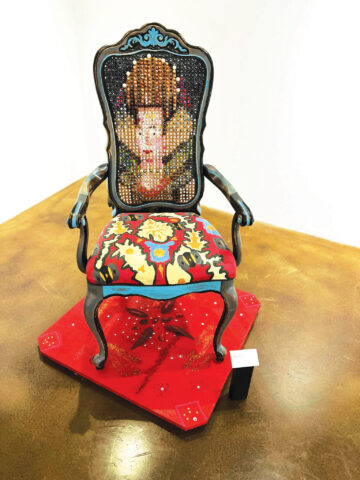
Initially on display from April 4 to August 4, 2023, the show was received so well that it was extended to mid-September. In 2025, the show will be on display at the San Bernardino Museum.
Photos by Tony Rizo / Riverside Community College.

